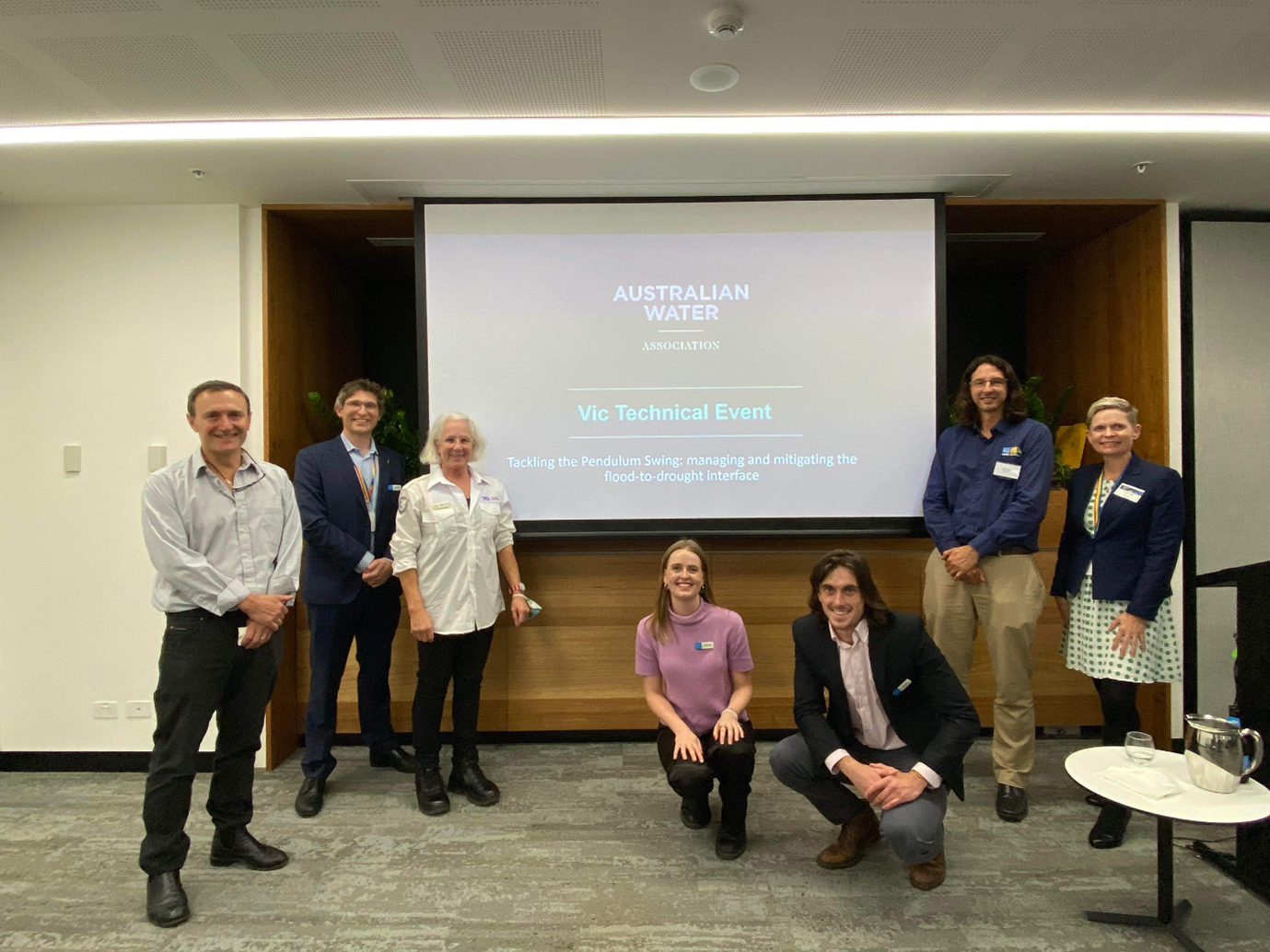Tackling the Pendulum Swing: Managing and mitigating the flood-to-drought interface

Victoria’s YWP Committee held its Technical Event, Tackling the Pendulum Swing: managing and mitigating the flood-to-drought interface on the 29th of March 2023.
Australia has been influenced by a triple La Niña cycle since late 2020, with increased rainfall and cooler daytime temperatures across much of the country over this time. With recent memories of the 2022 flooding disasters that devastated communities across Victoria, assessing our preparedness for droughts might seem frivolous. However, with Australia being known as the land of flooding rains and droughts, we are well aware that our next drought is never too far away.
In light of this, Victoria’s YWP Committee held its Technical Event, Tackling the Pendulum Swing: managing and mitigating the flood-to-drought interface on the 29th of March 2023. This event engaged a panel of industry leaders in the flood-to-drought mitigation and management space to explore the evolving impacts of climate change in Australia, and how we can adapt as a water industry. Panel speakers included Professor Rory Nathan from the University of Melbourne, Ben Tate from Water Technology, and Dr Faye Bendrups (OAM) from the National State Emergency Services Volunteers Association. The event was generously sponsored and hosted by AECOM at their CBD office on Wurundjeri and Boonwurrung Country.
Rory Nathan is a Professor of Hydrology and Water Resources in Infrastructure Engineering at the University of Melbourne. Rory provided a technical introduction to the drought-to-flood interface, and how these hydrologic extremes are projected to shift in a changing climate. Rory connected the dots between the projected hydro-climatic changes anticipated, and the implications for the water sector in the future. Rory challenged attendees to consider compassion when advocating for funding adaptive responses to flood management, highlighting that many communities have inadvertently built homes and landscapes on high risk coastal or floodplain zones.

The importance of reconsidering our approach to flood mitigation and response was then illustrated by Ben Tate, Water Technology’s Regional General Manager for Victoria and National Practice Lead for Catchments and Flooding. Ben reflected on the misalignment in Australia’s disaster funding approach, highlighting how 98% of the budget is spent on recovery, and only 2% on prevention efforts. Recent first-hand experience in the Rochester Flood of October 2022 showed Ben that flood preparedness and management has improved throughout his career, but much more is required to address the challenge of more frequent flood events in the future.
Faye Bendrups of the State Emergency Service (SES) then reflected on the importance of a community-centred, whole of catchment approach to decision-making in emergency response. Faye reminded the audience that volunteer retention at the SES is vital for Australia’s disaster and emergency response to be effective, as 87-90% of this work in the country is done by volunteers. Her experiences in Peru highlighted to Faye what effective emergency response can look like, as she witnessed citizens as young as school children engage in national disaster emergency exercises every year.
These presentations prompted exciting discussion during the Q&A Panel Session. While each speaker provided unique insight from their careers, the consensus was clear amongst the three: to effectively manage increasingly larger and more frequent droughts and floods in Australia, greater resources must be funnelled into our prevention and response efforts. The panel discussion also evaluated what Australia can learn from disaster management in countries with collectivist values such as Peru. Likewise, the panel discussion concluded with a call to action to consider how we can systemise our disaster response and preserve intergenerational knowledge amidst a changing climate.
The presentations and ensuing discussion with the audience highlighted the passion the industry has for flood and drought management, and it is hoped that this enthusiasm translates into greater action in combating Australia’s extreme climate events of the future.


